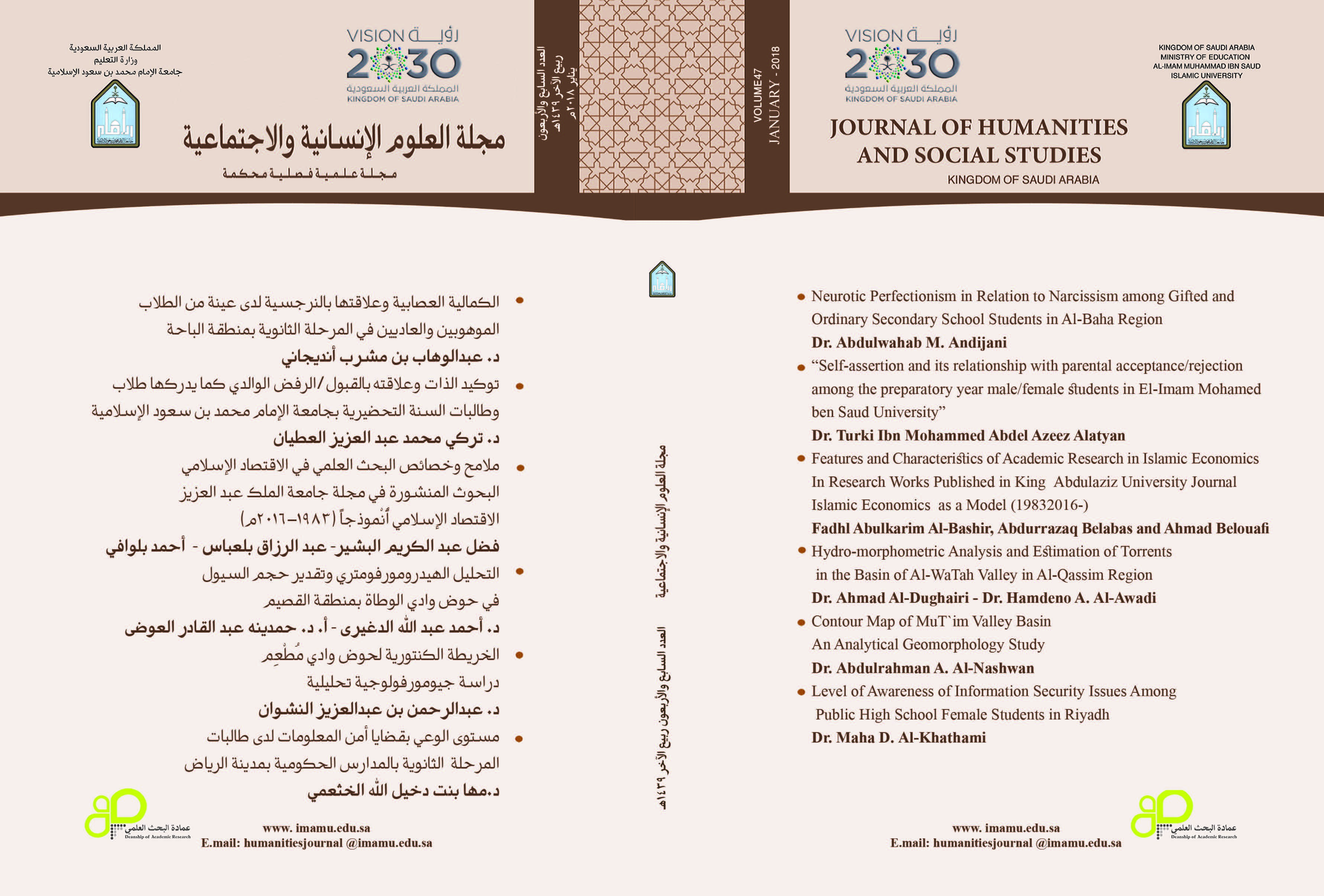Hydro-morphometric Analysis and Estimation of Torrents in the Basin of Al-WaTah Valley in Al-Qassim Region
Keywords:
Unit hydrograph, Storm hydrograph, Watershed, Morphometric analysis, Hydrologic analysisAbstract
Al-Qassim region receives heavy rainfall at certain times. Consequently, the valleys flow at full capacity, which poses a real threat to urbanization, roads and some of the facilities located on their way. Al-WaTah valley is considered as one of Al-Qassim’s valleys that are capable of converting rainfall into large floods. This is what has already happened in the past years, when the waters of Al-WaTah valley outflowed into Ar-Rummah valley. It then became a source of danger after its lower course was blocked because it was covered with sand resulting from the effect of the wind. Moreover, the urban area of Buryadah City has expanded Northwards and Eastwards and occupies now part of the course of the valley. Thus, a hydro-morphometric study to estimate the volume of the floods of Al-WaTah valley after rainfall is necessary to determine the extent of their danger, to enable officials and decision-makers to protect the city from this danger, and discuss ways to benefit from the floods water. The present study is based on Snyder's Model and on the American Soil Conservation Serves (SCS) in calculating the standard hydrograph values of the valley basin. The unit hydrographic ordinates were used to calculate the variables and values of storm hydrograph based on the actual data of the maximum daily rainfall recorded by Buraidah station in 45 years (from 1965 to 2009) and based on an estimation of the maximum amount of expected daily rainfall on the basin in the selected reference periods (5, 10, 25, 50, 100 years), in order to calculate or estimate the water volume which the valley flows through its outlet in the form of torrents. The study shows that the peak flow in Al-WaTah valley calculated by Snyder's Model in the selected reference periods (5, 10, 25, 50, 100 years) was 3.26 m3/s, 38.56 m3/s, 166.58 m3/s, 331.67 m3/s, 560.04 m3/s, respectively. On the other hand, the peak flow in Al-Watah valley calculated by the American SCS model in the selected reference periods was 1.58 m3/s, 18.65 m3/s, 80.58 m3/s, 160.43 m3/s, 270.90 m3/s, respectively.




